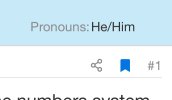- Relationship to Diabetes
- Type 1
- Pronouns
- He/Him
Thanks for this info, if I was to spike up to 15mmol/L within the 2 hour window after eating but came back down to below 9.0mmol/L within the time frame would this be okay?
Welcome to the forum @Hak92
As long as those rises are short term, I think they are much less of a cause for worry. But if you’d like to reduce the amount of rise, there is something you can try.
It sounds a little like your dose os right, but the insulin is taking a while to get going. If you’d like to see if you can smooth out some of those wobbles you might cautiously start experimenting with giving your insulin a bit of a head start, by injecting and then waiting 5-10 minutes before starting to eat. Then consider carefully adding 5 minutes extra after a few days if there’s still a bigger rise than you’d like (but remember that some rise and fall is perfectly natural. Waiting too long can mean your food can’t absorb fast enough and you risk BGs dropping too low, so it’s a delicate balancing act!
Some T1s on the forum find they get better results using this pre-bolus method, carefully adjusted to suit their needs.


